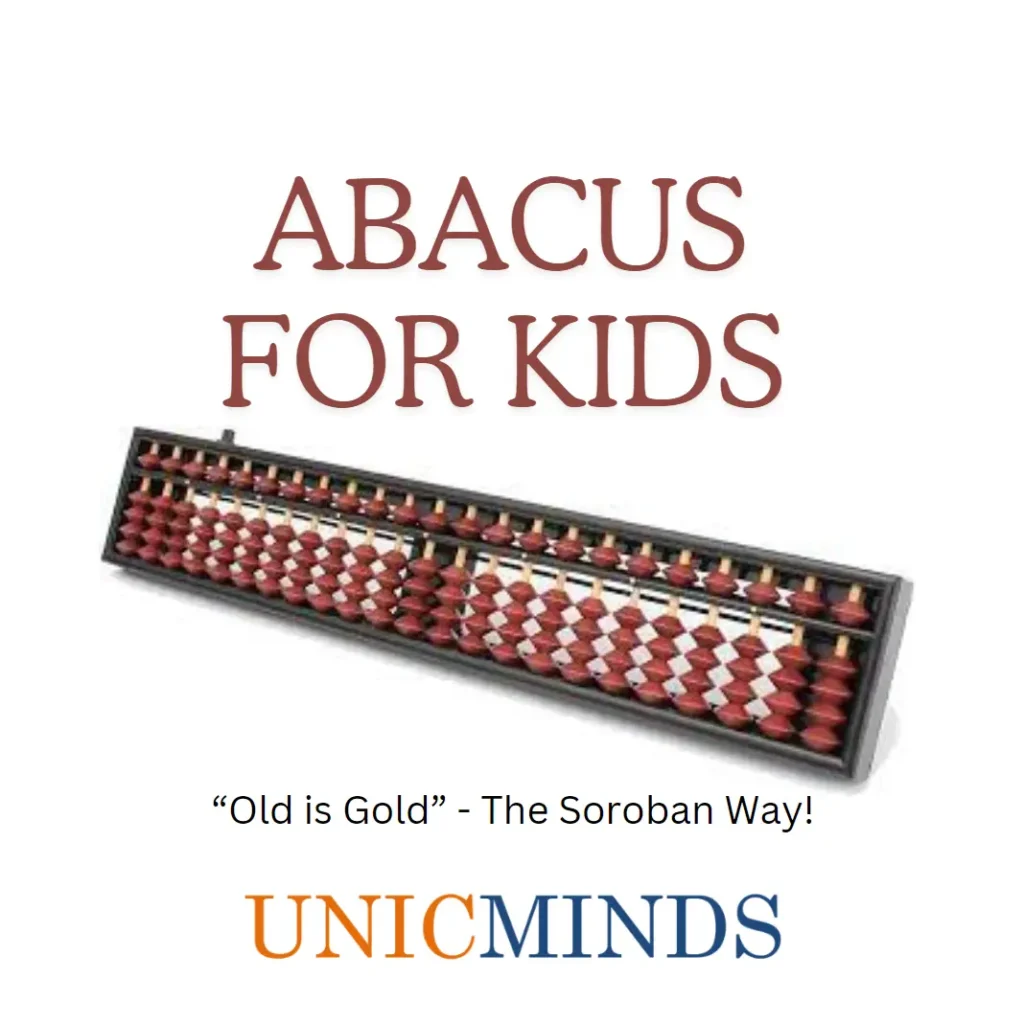The Abacus essentially teaches children to become skilled in rapid mental mathematics with the help of beads where the children use a single hand to manipulate beads initially. This is done through memorizing a visual through the Abacus as a mathematical sum. The Abacus is called Soroban in Japanese. The learning of Abacus (Soroban) emphasizes the mental development from concrete to the conceptual, formal & symbolic which is the same process as Piaget and cognitive theory.
Most commonly people think Abacus as a primitive tool that is used to add single digit numbers by moving beads. Wrong! The abacus is one of the devices that are used to count large numbers. Abacus is an ancient calculating tool used by moving stones or beads. You can still see merchants and traders in Asia use it at the speed of light. The use and evolution of the Chinese 1/5 abacus was begun by the Japanese. The 1/4 abacus, a style preferred and still manufactured in Japan today, appeared in 1930. The 1/5 models are rare today and 2/5 models are rare outside of China (except in Chinese communities outside China).
Little children have difficulty grasping arithmetic calculations because it is not something they can see or touch. By working with beads on the abacus frame, math becomes something your child can easily understand. Abacus has now been proven as a complete brain development tool over the last two decades. It became popular over the world after being transformed from a calculating instrument into a system having immense power to benefit children of small ages. This concept of mental math enables children to achieve a high level of speed, efficiency, accuracy, concentration and increase in memory power.
The adage “old is gold” has been further authenticated in the case of Japanese Soroban (Abacus), developed around 450 yrs ago being used as a modern education tool to enhance mental ability in children. Soroban (Abacus) is a defined rectangular shaped instrument lined with 23 vertical rods fitted with beads. A horizontal rod in the upper deck of the Soroban (Abacus) frame, divides one bead on the top & the other 4 below. Each of the beads on the upper deck of the horizontal bar & the lower beads are represented by the unique value, which they derive when each of the beads touch the bar.

Most people are unaware of the benefits associated with an abacus course for children. An Abacus course online ensures an increase in speed of the arithmetic calculations with accurate results. Abacus Classes expands brain usage, in addition to making math learning easy and effective. Soroban abacus is also used as an effective education tool, especially for lower-grade students to understand basic number systems as follows:
- It is one of the most popular calculating tools from ancient times
- Children do fast calculations in their mind by visualizing the bead movements
- Abacus has a very simple structure that displays the numbers the same way as the decimal system.
- As the level of learning abacus for children’s increases, its complexity also increases and it requires regular practice.
- Mental Arithmetic is a term that is using in Abacus for the calculations done in mind
- Mind calculation enhances the concentration level of the child.
- It is useful and effective in cracking competitive time-based tests.
- Easy to understand base-ten and place value for children.
- You can determine the calculating process step by step.
- Using a calculating device motivates children to have an active attitude toward the study.
- Practicing soroban develops the children’s anzan ability (calculation way by imagination)
Hope this is useful, thank you.
You may like to learn: Free Vedic Mathematics Course, English Essentials: Subject, Verb, Object, Predicate, Phrase, Clause, Sentence and Young Coders Program

